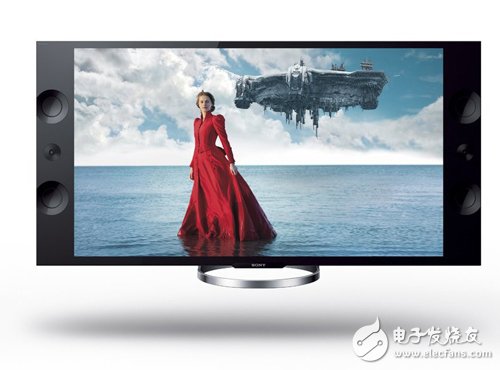The 4K & TImes; 2K era will be demonstrated by multi-core GPUs. UHD mobile devices have become an important battlefield for major consumer electronics brands. With the launch of a new wave of UHD video displays, the need for highly efficient compressed images has risen. The industry ’s decoding technology can be used without sacrificing frame rate. Provide ideal image quality under the circumstances, while offloading multimedia processing to the GPU, reducing CPU workload and overall mobile device power consumption.
Ultra-high picture quality (Ultra HD, UHD) 4K & TImes; 2K resolution is the common theme of all consumer electronics exhibitions in 2013. Companies such as LG, Samsung, Sony, Toshiba, and Hisense are the first to launch UHD smart TVs, with different sizes of screen or display technology. But the UHD specification can not only be applied to TVs. For example, Panasonic showed a flat panel device based on UHD lateral electric field effect (IPS) screen technology at the Consumer Electronics Show (CES) in 2013, and many manufacturers produce UHD for the professional market. monitor.
This article will review the latest Internet Protocol (IP) multimedia processors that can handle UHD images, the application market, and how they can be effectively used on mobile and embedded devices to enrich playback content.
Market overview for creating UHD content
First of all, if you first observe the factors driving ultra-high image quality and how the broadcast industry uses UHD to create content, you will immediately see most of the major movie companies such as Paramount, Warner Bros., 20th Century Fox and Sony Pictures have begun to use UHD technology.

UHD TVs have been released in 2013.
Movies like Spider-Man: Amazing Spider-Man, The Girl with the Dragon Tattoo, and Hobbit: The Hobbit are all shot in UHD format, so the content in UHD format has gradually Start showing in the cinema. YouTube users have also been able to upload UHD videos since 2010, and Sony claimed that "everyone's opinions on three-dimensional (3D) videos seem to be very different, but they have a positive view of UHD videos."
Canon is also working hard to promote the UHD specification, launching many new professional and digital single eye (DSLR) cameras. Canon used these events to promote a series of short films of world-renowned and independent directors to demonstrate the potential of this new technology.
However, because UHD movies must be introduced to the market with a new wave of video devices, there are many factors that will affect the speed of UHD adoption. A movie theater is an ideal place to use UHD content initially, but the infrastructure needs more updating, because older projectors are not compatible with UHD, and using multiple 2K projectors in parallel does not produce UHD. The effect, which is like using a multi-projector large screen projection system to show ultra-high resolution and ultra-large screen movies (IMAX), does not work.
Of course, it will take some time for the new technology to be widely adopted. The broadcast industry and the transmission chain of the broadcast content must assemble the necessary equipment and infrastructure to support UHD playback; the original equipment manufacturer (OEM) must manufacture decodable and display playback Content UHD TV, set-top box (STB) and media player. Consumers must also be prepared to accept another "Digital Switchover" when upgrading their equipment.
In the process of observing the acceptance of 3D technology in the market, it can be found that the cinema is the main market driver. After watching 3D movies, some fans are keen to create the same experience at home, so soon 3D TVs began to appear in the consumer market. UHD should be in a similar situation, especially when image compression technology continues to improve and the concept of large organic light-emitting diode (OLED) screens comes true.
This process will be similar to the experience from standard resolution (SD) to high definition (HD). If you can make full use of the power of hardware to encode and decode the video data, these videos can show amazing quality. If you use graphics processing and image decoding technology, you can add many other advantages, such as image stabilization, pixel level brightness / contrast correction, and other post-processing options.
The IP cores of the industry's PowerVR image processors and PowerVR graphics processors have been able to process high-quality content at a stable and sustained high frame rate and create breathtaking images.
CBD Atomizer,CBD HHC oil Cartridges,Full spectrum Thc oil HHC vapor,Live Rosin HHC Oil vape,Delta 8 oil Atomizer
Shenzhen Yingyuan Technology Co.,ltd , https://www.yingyuanvape.com